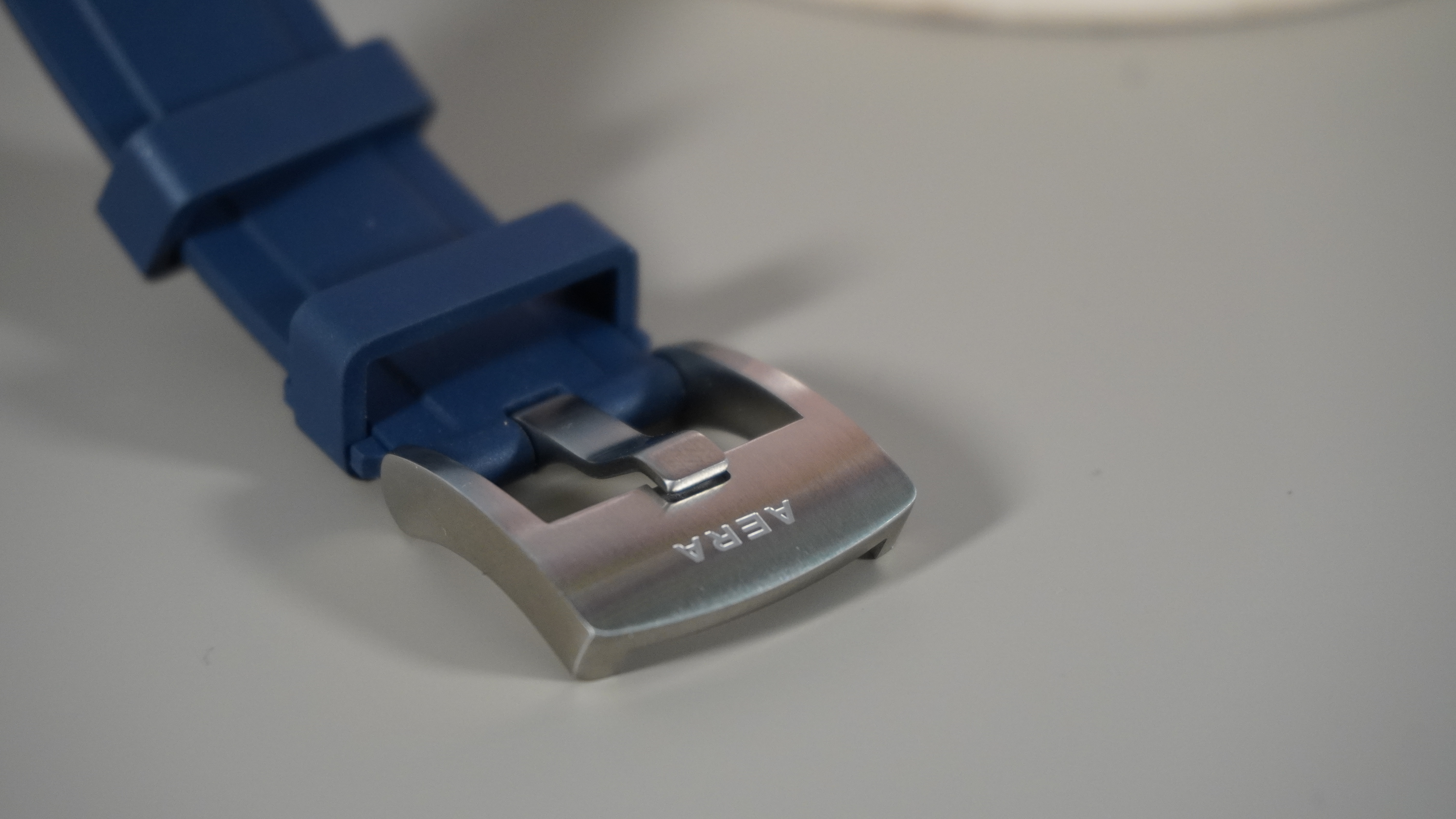
Being able to test the best watches on the market is a really fun job. You get to see all of the most popular, Instagram-worthy watches, while also getting hands on with some lesser known brands.
That's exactly what happened with Aera. The newcomers to the market reached out with a duo of models – the Aera D-1 and this, the Aera P-1.
Both of these sit slightly larger on the wrist, with bigger case diameters than the current trend for small watches has popularised. The D-1 took on a dive watch form, but this P-1 is styled more as a pilot watch.

Let's jump into some specs. First things first – that case diameter is a whopping 43mm. While five years ago that may not have been met with too much trepidation, these days that does feel positively gargantuan.
36mm is the new 40mm; 40mm is the new 43mm, and 43mm? Well, that might as well be a wall clock for most people.
That case is manufactured from a gorgeous chunk of 904L stainless steel. If you didn't already read my review of the Aera D-1, 904L is the name given to a special steel composition with a slightly different chemical make up. That brings better corrosion resistance and a shinier appearance when polished, and was popularised by Rolex.
The dial here is a beautiful matte black hue. That's topped with Arabic numerals hand filled with Super LumiNova and surrounded by a minute track.
The matte nature of that dial is really nice to look at. While there is definitely a trend for dials which play with the light at the moment, that's rarely what you'd want from a pilot watch. In those scenarios, you need a dial which is easy to read no matter if it's under direct sunlight or next to no light at all – and that's exactly what you get here.
A Sellita SW200-1 movement sits inside. That's a really reliable movement, which we've seen a whole lot of recently – most notably in a range of Christopher Ward watches lately. You'll also find a water resistance rating of 100m here, which should be more than enough for most pursuits.

What is the Aera P-1 like to wear?
When I tried out the Aera D-1, I was pleasantly surprised by the wearing experience. Despite the 44mm case diameter, the watch felt neat on the wrist – at least once paired with a slimmer NATO strap.
Can the P-1 give the same experience? Well, sort of, yes. Certainly, it's not the wrist-mounted wall clock many would have you believe.
Again, the included strap selections – whether rubber, leather or suede – all have quite a pronounced angle to them. That adds a significant amount of length to the watch, which can make it tricky for smaller wrists.
With no NATO included for this one, I couldn't try that here, either. Regardless, though, I'm not sure it would have felt smaller, even with a less cumbersome strap. The slimmer bezels and more open face of the P-1 just give it a broader silhouette, which is tougher to style out.

Is the Aera P-1 worth the money?
That's a tricky one to answer here. Certainly, the raw elements on offer warrant the price tag – getting Rolex-esque 904L steel and a well-regarded third-party movement.
With that being said, it's certainly not an easy sell. At £1,100, the Aera P-1 enters one of the most fiercely competitive market segments out there. A wide range of established brands and plucky start up efforts exist here, giving users a lot of choice.
Whether it stands out above the noise will come down to your preference. One thing is for sure, though – if you find yourself frustrated by the current trend for smaller timepieces, the Aera P-1 should definitely be on your radar.







